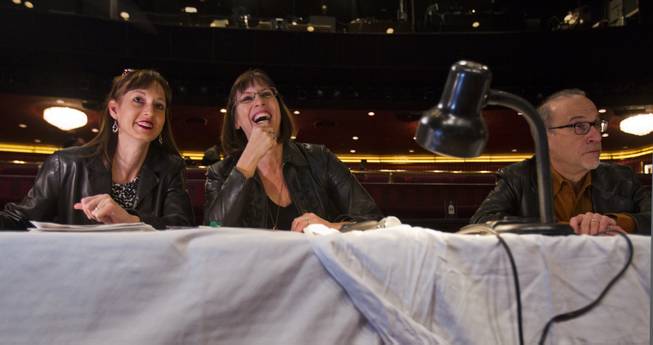
Suzanne Swanson, Diane Palm and Joel Mann of “Jubilee!” watch auditions Tuesday, Jan. 14, 2014, at Bally’s.
Wednesday, Feb. 10, 2016 | 1:51 p.m.
You feel this moment coming as Diane Palm talks of her days in “Jubilee.” This feeling hangs heavily over the conversation, that sense that stuff is about to get real.
It happens when Palm is asked what advice she would give herself in 1980, after all of the life she’s lived in 34 years with “Jubilee.”
Palm ponders, imagining what it would be like to face her teenage self.
“I think, probably, I would give the same advice that I followed, which was, you know, keep your eyes open and keep your mouth shut,” Palm says during a conversation in her office backstage at Bally’s Jubilee Theater. “I’d say, ‘Learn from everybody that you can.’ That’s what I’ve tried to do along the way, and the best person to learn from was Fluff herself.”
Fluff LeCoque. Saying her name the week before “Jubilee” closes causes Palm to halt and her voice to tremble. “Sorry,” she says, needlessly. “My relationship to Fluff was more than professional for a very long time. It was familial. Parental, absolutely. She took the place of my family. There were no secrets between us. There was no holding back.”
No holding back.
“She never sat down and preached, never said, ‘You must do this or must to that.’ She let me chart my own course,” Palm says forging sentences through the sadness. “I love Fluff very much.”
Palm slips into present tense when talking of the legendary choreographer and director, the woman for whom Palm, as a teenager, auditioned for in the days before “Jubilee” opened on July 31, 1981. LeCoque died Dec. 10, just two days before hotel officials announced that “Jubilee” would close this week.
“We talked every day. The closing of the show would have been something that would have come up in normal conversation,” Palm says. “What was great about Fluff, if something wasn’t really, you know, along the lines, she would just give you a look. That was enough to turn around and go, ‘Let me look at this. Maybe I should do that differently?’ ”
“Jubilee” closes Thursday night a few months short of its 35th anniversary. The last showgirl, or “feather,” show fell prey to simple economics: Audiences dissipated as Strip production shows grew in scope and quantity. The production of 64 dancers and a union-scaled crew of about 160, dozens of costumes costing upwards of thousands of dollars apiece, all that outlay finally caused the showgirl to hang up her headpiece.
Palm has been in the cast from the very beginning — and before, counting her days as a dancer in the run-up to the show. She helped LeCoque sift through costumes and set pieces after the fire at the then-MGM Grand raced through the hotel and activated the sprinkler system at what was then called Ziegfeld Theater on Nov. 21, 1980.
Palm was onstage opening night. She served as a dance captain and assistant company manager to LeCoque for decades and took over that role when LeCoque effectively left her day-to-day duties in 2012. The show was helmed by the great Donn Arden, who died in 1994, and also Pete Menefee. LeCoque and Palm were constants in an ever-evolving attempt to keep the show classically rooted, yet contemporary as the culture around it became more high tech.
The last significant effort to modernize “Jubilee” was the arrival of Beyonce’s choreographer Frank Gatson Jr., who either ran out of funding or ideas or both in a brief stint as creative director. Gene Lubas was brought in last year as something of a “show doctor,” which led to improvement among Yelp reviews, but there was no stemming the show’s financial losses.
There is no firm plan to replace “Jubilee,” yet, which closes in a beautifully appointed but creaky and outdated theater.
Through all of these seismic shifts, Palm has been a constant. As a way of reassurance for the effort of all those decades, she says, “I don’t know any show that has lasted 34 years, so it’s the end of a fantastic run, you’ve got to admit.”
She remembers the jitters of stepping onstage before Arden and LeCoque more than 35 years ago in her first audition for “Jubilee.”
“I had already danced at the Lido, at the Stardust, so I was aware of Donn Arden, but I didn’t know Fluff,” she says. “I met Fluff the same way so many dancers and performers had met her, which was at an audition. Standing there, you know, kind of exposed, saying, ‘Please hire me for a job.’ There I was, in a leotard and tights, handing my life over to her. In those days, she pretty much ran everything.”
Palm says her first thoughts upon learning the show was closing was for the future of all the dedicated people who made “Jubilee” a Las Vegas phenomenon.
“I think like so many of us, the first thing I am concerned about is all the people who work here,” she says. “What happens to them? Times have changed, and when you’re thinking of Las Vegas, there used to be a lot of these shows around town, and now there aren’t these shows anymore.
“It’s the last one of its kind. You have people in the show who were so excited to be part of this, just starting their careers, and now they have to kind of change gears and are now looking for direction.”
Palm fondly remembers the time when “you couldn’t swing a cat without hitting a showgirl, which was great for the performers,” she says, laughing slightly. “You could just go down the Strip and work here, work there, work everywhere else.”
The era changed when audiences began seeking a larger variety of entertainment in Las Vegas. Cirque du Soleil, especially, cut into the audience for “Jubilee.”
“Cirque kind of took that place, and it was a different skill set for what they are looking for,” Palm says. “They are definitely spectacular in what they do, and it is a completely different type of skill set than what you see in ‘Jubilee.’ ”
Palm says the city’s penchant for reinvention left “Jubilee” seeking a new audience, and the appeal of the showgirl has always swayed with the times.
“Like anything, Las Vegas reinvents itself. So I think, 34 years is a remarkable run, but you could see how things are changing in Las Vegas anyway, all of these types of shows had gone away. ‘Folies Bergere’ was the last one other than ‘Jubilee’ left, and it had gone away (closing at the Trop in 2009),” Palm says.
“I don’t know if it’s that people stopped wanting to see these types of shows and wanted to see something different and something new, but you might see a resurgence of these types of shows in Las Vegas because the pendulum swings back in this city.”
The mass of visitors did dilute the elegant appeal of “Jubilee,” in Palm’s estimation.
“When we first opened, it was an event to see this show. Everyone dressed up, made a night out of it, went to dinner before and after, we had maître d’s and captains of the showroom, all of that,” she said. “I think what changed for the show is what changed in Las Vegas, and it became more accessible to a larger population of people coming in, and it went from being very formal and very elegant as an event to being far more casual.”
“Jubilee” is a lot of things, but it’s never been casual.
“We just had a tough time reaching a mass audience at the end,” Palm says. “We had a lot of Asian groups coming in because we are a worldwide destination, but otherwise it was difficult.”
But the image of the showgirl can advance with the times.
“I think it’s very doable. You wouldn’t want to see a showgirl from the 1910 Ziegfeld Folies today because she is not so sexy by today’s standards, and you can see the evolution through time and how the showgirl has looked with French and European influences,” Palm says.
“When you looked at the Las Vegas shows when they opened, they were different, and ‘Jubilee’ was at one time a very modern version of a classic showgirl show. Then you saw others, like ‘Enter the Night’ and Siegfried & Roy using showgirls, so she has been very adaptable.”
The question, Palm says, is, “What are showgirls going to look like, or evolve into, and can they exist without all of the production around them? But there is still something powerful about her image. Otherwise, she wouldn’t have been around all these years.”
Can there be another show of the grandiosity of “Jubilee” in Las Vegas? Palm is optimistic — to a point.
“Oh, sure. But you have to find the person who has very deep pockets because these are not inexpensive shows to produce,” she says. “Anything is possible, but you know obviously you have to have scale and have a venue that can accommodate that. This show survived because of the hotel’s support. … So maybe not in Las Vegas. Maybe in China. Maybe in Europe. Maybe someplace else. But, again, it’s a very powerful image.”
Palm is asked that, upon the closing of the show that has been central to her life, all of her life, what is next. Does she expect to serve as her generation’s Fluff LeCoque, mentoring a culture of dancers for the next incarnation of “Jubilee”?
“It’s funny. That isn’t something that I ever necessarily wanted, to be the custodian of the showgirl,” Palm says. “But I have to say, because of all of the experiences I have had with the show, all of the stuff that I’ve done, all the many opportunities with publicity and creating numbers.
“I’ve learned a lot as far as how to stage, how to choreograph better. I know how to give that Las Vegas ‘pow’ to where I could give it to someone like a J.Lo or surprise Rod Stewart at his birthday party with showgirls. These are things that I’ve done because of this show.”
Palm says, simply, that she is one who can remind of what “Jubilee” was and what a showgirl production can be.
“I respect the craft. I respect the genre. I have always been very proud to have been associated with this show,” Palm says. “Whatever I do, I want to make sure it’s done right, and when they talk about ‘Jubilee’ that they get their facts right and know who Donn Arden is and who Fluff LeCoque is.”
She pauses again as that sentence sinks in. “You know, being a dance captain, teaching the show and working with so many talented people, I am beyond grateful for ‘Jubilee.’ … I’ve worked with some amazing people, and of course No. 1 in my book is always Fluff.”
Palm exhales as her eyes well up once more. But she smiles through the sadness, at the memory of the show that outlasted them all and the woman who changed her life.
No, there will never be another Fluff LeCoque, and there will never be another “Jubilee.”
Follow John Katsilometes on Twitter at Twitter.com/JohnnyKats.

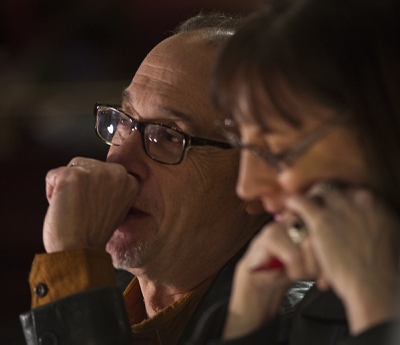
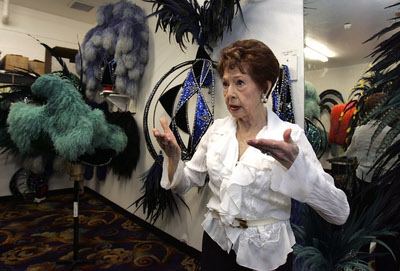
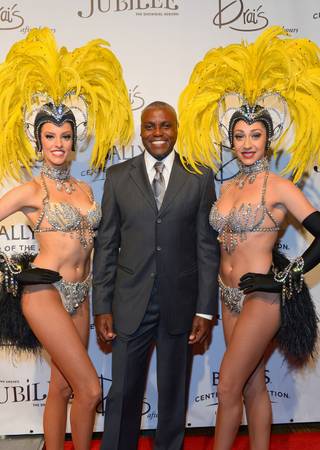
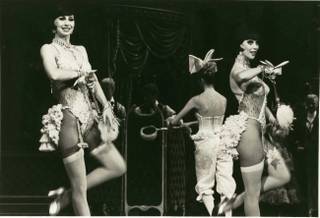
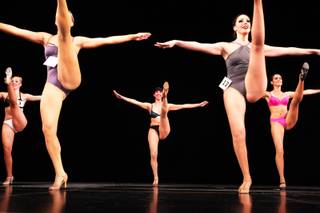
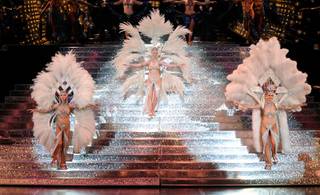
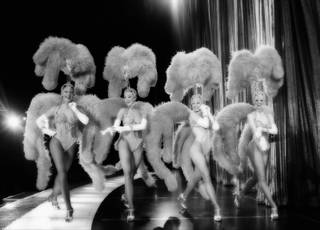

Join the Discussion:
Check this out for a full explanation of our conversion to the LiveFyre commenting system and instructions on how to sign up for an account.
Full comments policy